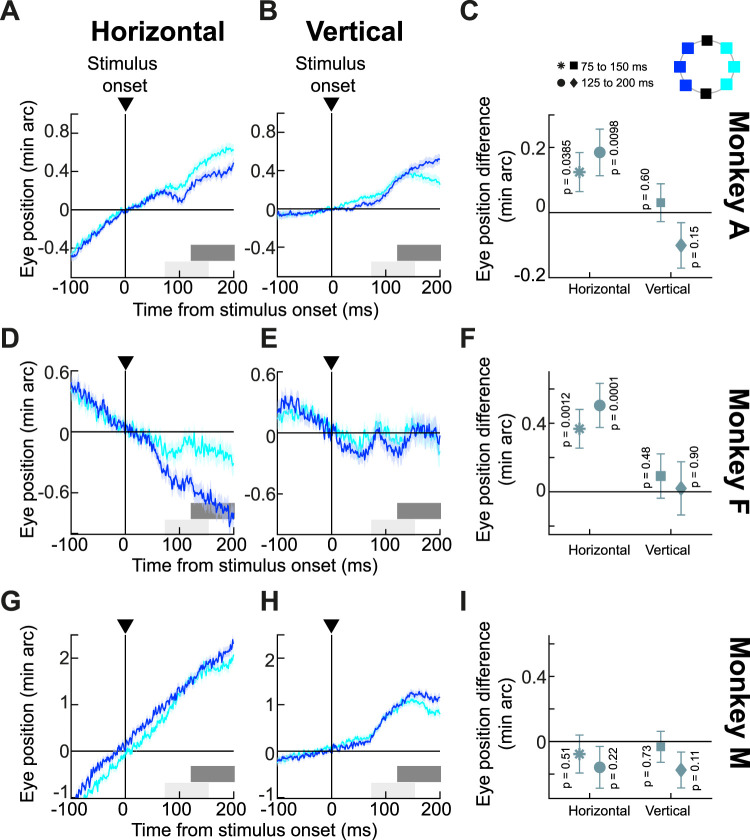Figure 5.
Spatially directed drift modulations with localized stimuli along the horizontal direction. A, Average horizontal eye position from monkey A when localized flashes (1 × 1° squares; 7.9° eccentricity) appeared in the right (cyan) or left (blue) visual field (see inset schematic in C). Error bars denote SEM (n = 1,120 and 999 trials for right and left stimulus locations, respectively). Drift trajectory was affected by stimulus location, and the effect increased with time. The two gray bars near the x-axis indicate measurement intervals for comparing eye positions between the two groups of flash locations. B, Vertical eye position from the same trials as in A. There was a general upward drift component, which was similar for rightward or leftward flashes. C, We measured the difference between the cyan and blue curves in A and B for the two measurement intervals. Positive values mean rightward or upward differences between the cyan and blue curves. Horizontal eye position reflected the spatial layout of the flashes, and this difference increased with time. Vertical eye position did not. D–F, Similar observations for monkey F (n = 349 and 398 trials for the right and left stimulus locations, respectively). This monkey showed an even clearer drift response modulation by stimulus location, also consistent with the same monkey's performance in earlier experiments (Tian et al., 2018). G–I, Similar analyses for monkey M (n = 649 and 1,091 trials for the right and left stimulus locations, respectively). This monkey did not show horizontal modulation of drifts by stimulus location, but this monkey also had significantly faster baseline drift speed. As with the other two monkeys, there was still an upward stimulus-triggered drift response component (H). P values indicate results of t tests comparing eye positions within a given measurement interval.

